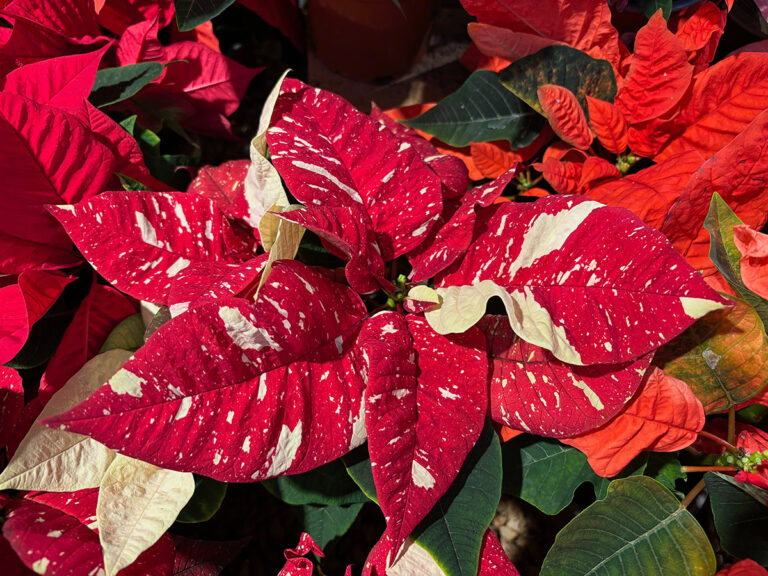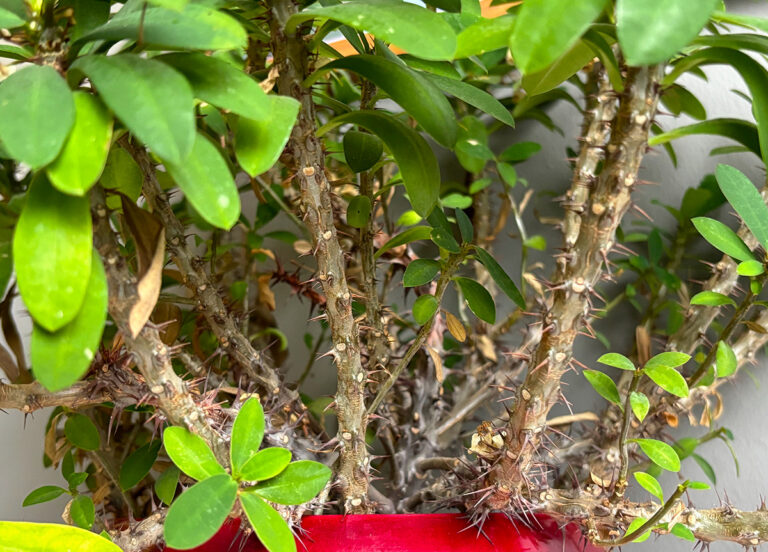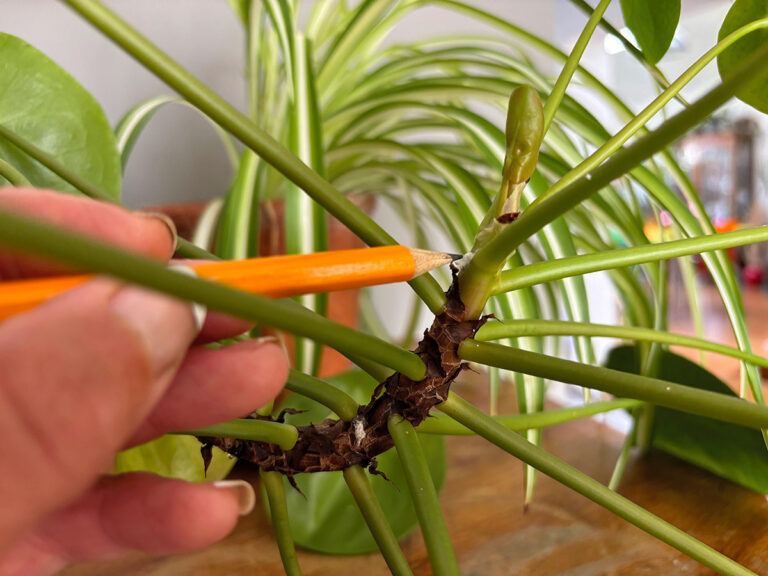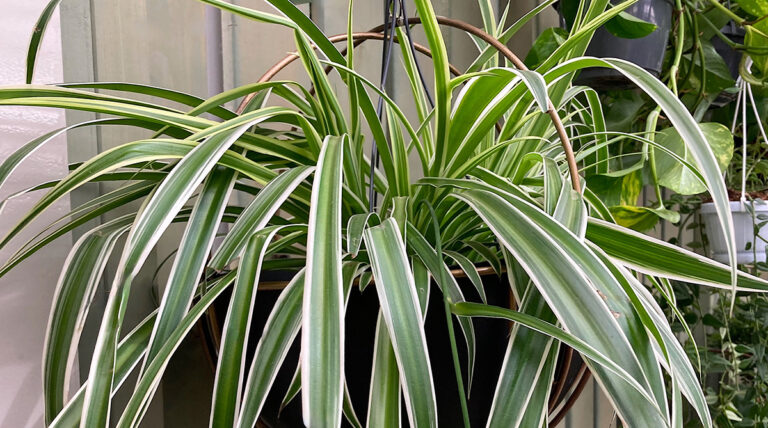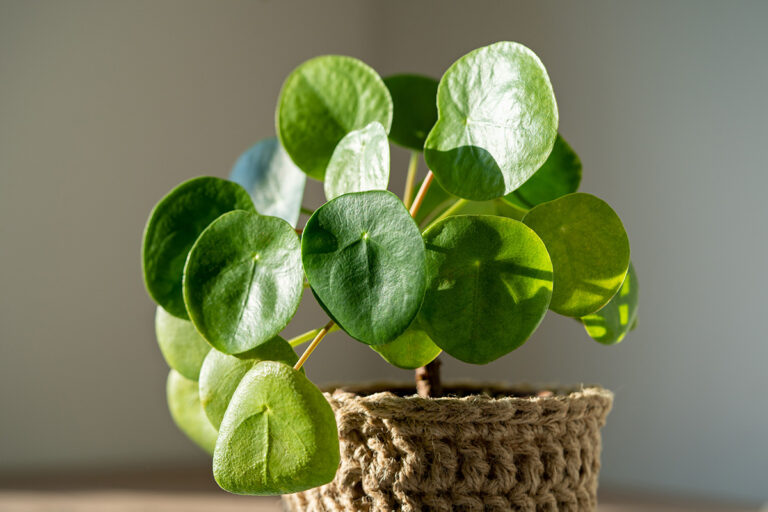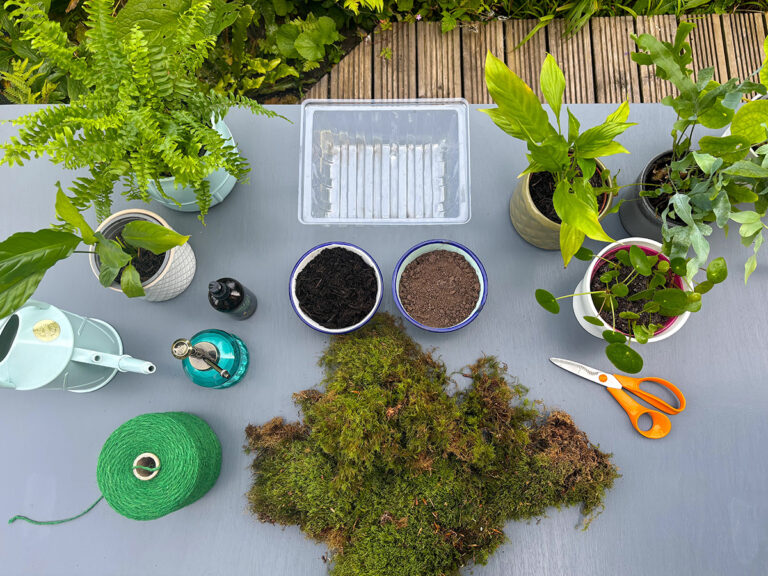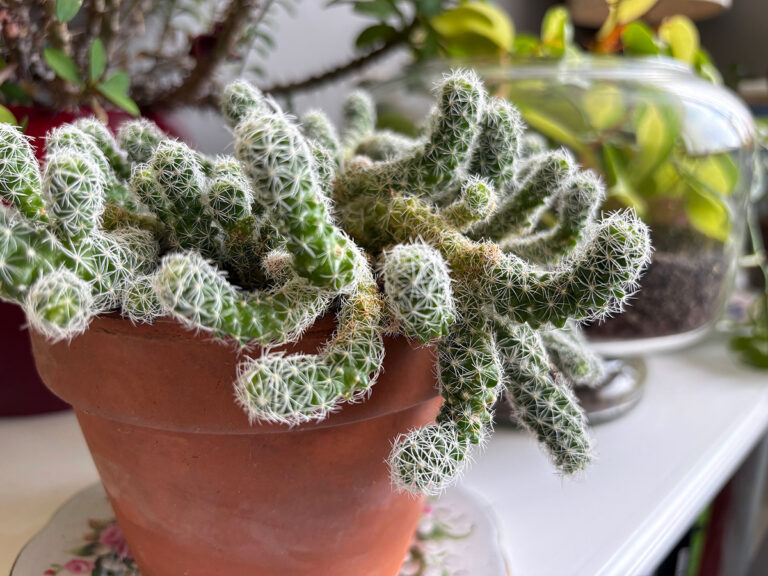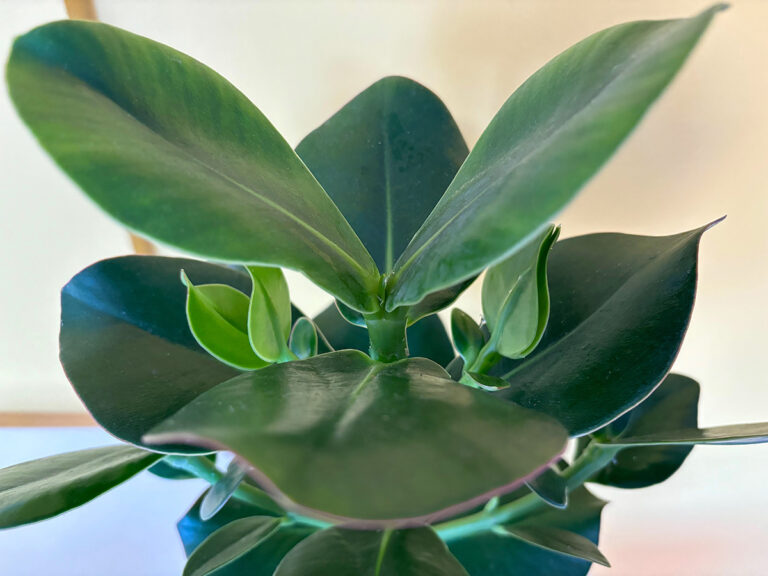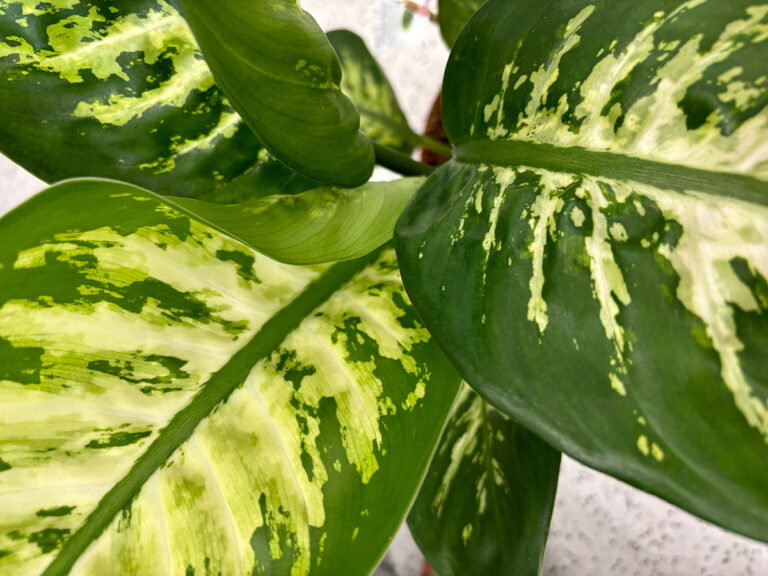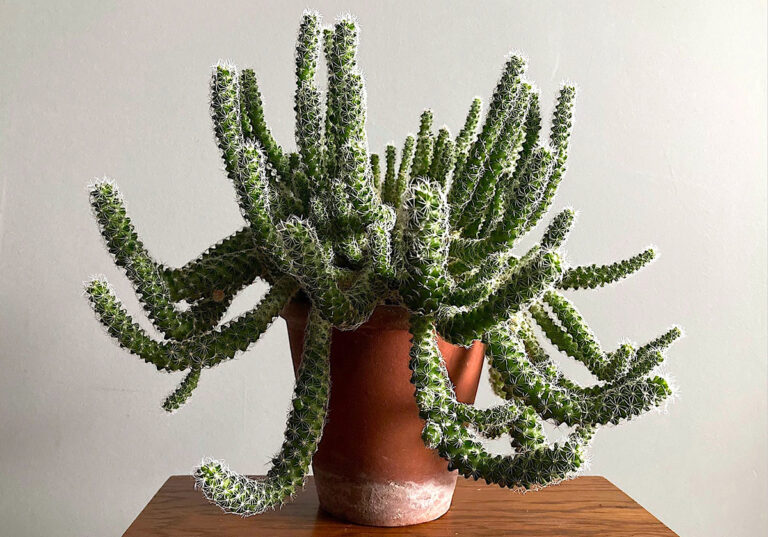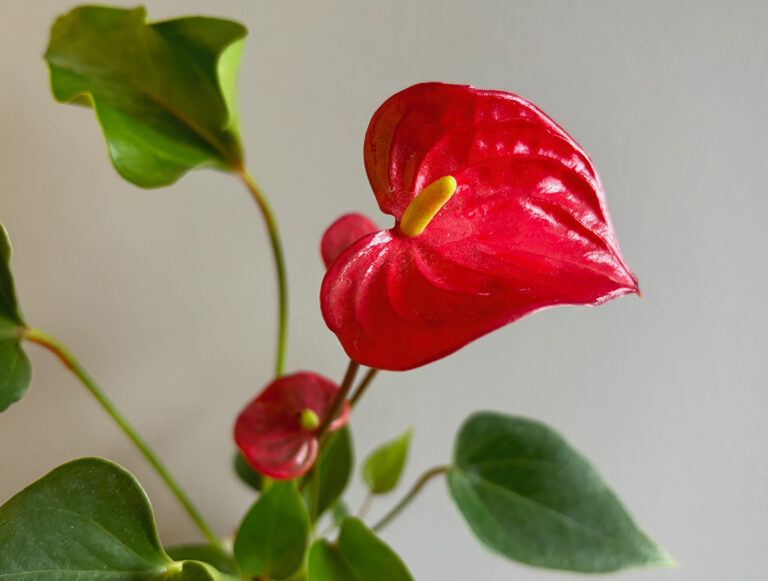As houseplants Peperomia are grown for their foliage and with an estimated 1000 diverse species, covering multiple shapes and colours from perennial shrubs, lithophytes growing on rocks to epiphytes on trees, there is a vast choice.
Popular houseplants include the compact, short-stemmed Peperomia caperata with deeply ridged, heart-shaped foliage and P. argyreia with its watermelon-like stripes, to baby rubber plant P. obtusifolia with its glossy spoon-shaped leaves, upright stems of P. nivalis, to the trailing stems of P. rotundifolia.
Predominately found in Central and Southern America in the understory of cloud forests, many Peperomia love moist tropical environments but other species have evolved to cope with drought with waxy, water retaining, succulent-like leaves.
Known as ‘semi-succulents’ Peperomia have thick, fleshy leaves that can store water but they do differ from true succulents preferring higher humidity and indirect light. And good news, Peperomia is non-toxic so safe to grow around children and pets.
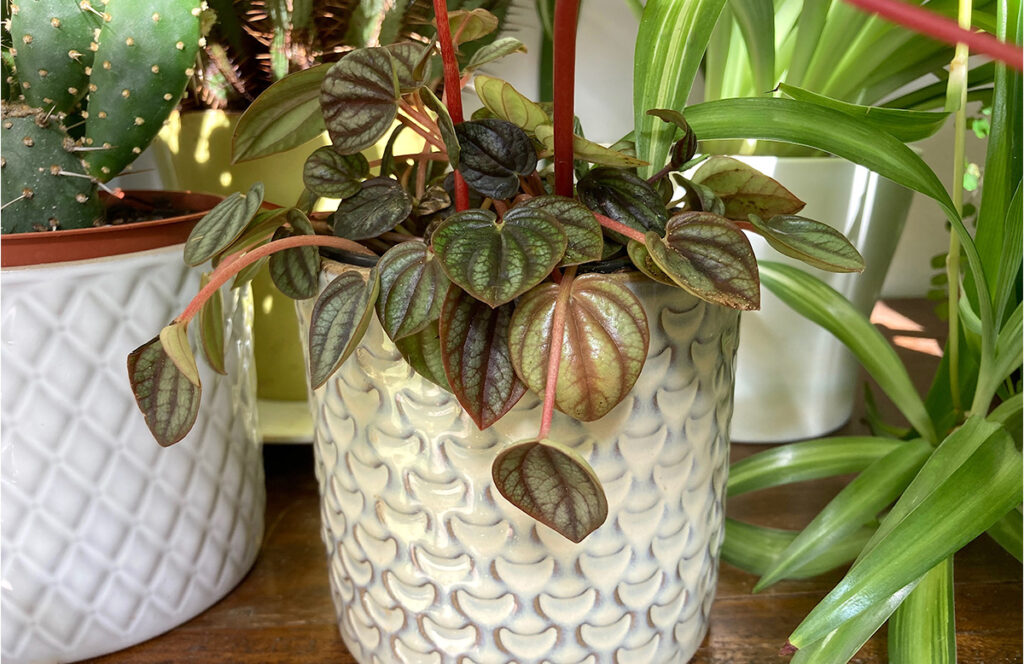
So how can you keep your Peperomia looking perky?
Water
This is a plant that responds better to being under watered rather than overwatered but the key is finding the right balance. Let the top half of the soil dry out between waterings and then give it a good soak. Don’t let your plant sit in water for long periods of time as they are not fans of soggy roots; stems may turn to mush but equally don’t subject them to prolonged drought or their leaves will fall. Remember their happy place is moist, dense rainforests.
Depending on where the plants are growing within your house, the light levels, warmth, and time of the year, adjust the frequency of watering. Aim to water once every one to two weeks during the peak growing season.
One of the easiest ways to water your Peperomia is to submerge the pot in a bowl of rainwater, leave it soaking for 10 minutes and then let it drain. If you do not have access to rainwater boil the kettle, pour water into an open container and leave for 24 hours so tap water chemicals like chlorine and fluoride can evaporate.
Light
Peperomia are best suited to indirect bright light. They naturally grow in humid, crowded rainforests where plants compete for light and space and although they can cope with lower light levels this will produce lanky, etiolated stems.
Keep away from intense, direct light, as leaves will scorch. Choose a steamy bathroom or kitchen, a lounge with skylights, a terrarium or even nestle them under taller houseplants.
Temperature
Peperomia love humidity. Their natural tropical home enjoys temperatures ranging from 15°C – 26°C (60°F – 80°F) so keep your plant happy in a warm spot away from cold drafts.
Once temperatures outdoors are consistent you can give your houseplant a holiday and pop it outside in the daytime to soak up some dappled rays, just don’t leave it to fry in intense sunlight.
Inside, group pots of houseplants together to increase humidity and spray plants with a fine mist of Plantsmith Perfecting Houseplant Care Mist or rainwater. Misting will temporarily increase humidity.

As Peperomia foliage is semi-succulent be careful to not go mist mad or this could encourage fungal diseases. Plantsmith Perfecting Houseplant Care Mist will not only provide moisture but also nutrients and help recreate that humid rainforest environment these plants thrive in.
Soil
A free-draining soil is essential. Use a houseplant or cactus potting mix or combine compost with orchid bark or coir, sand and perlite to create a balance of organic matter which easily drains. This will help air circulation around the roots by keeping soil light and aerated rather than compacted. Porous terracotta pots are good as they absorb excess moisture.
Peperomia do well in compact spaces so do not be too hasty to pot their shallow roots in to a bigger pot.
Fertiliser
Peperomia have low feed requirements; once a month should be ample. Plantsmith’s Fortifying Houseplant Feed & Tonic provides a special blend of potassium, iron, magnesium, kelp and essential macro and micro nutrients which promotes healthy foliage and growth. Importantly it contains the optimum strength of nutrients for houseplants; over fertilising can be detrimental to the plant’s health.
Shake the bottle to ensure all nutrients are evenly mixed then add 5 ml (approx. 4 pumps) from the 500ml bottle or dilute one pipette from a 100ml bottle into a litre of tepid rainwater and apply.
Plants carry out all their chemical reactions in solution so soluble food saves the plant wasting energy breaking down material before they can use it. Houseplants rely entirely on us to feed them so ensure the formula you give them is specifically designed for houseplant’s needs.
Flowering
Peperomia produce tall inflorescence, these flower spikes are sometimes referred to as ‘ rat’s tails’ but they actually look nicer than the name suggests. Seeing your plant flowering is a great achievement as it means you are doing all the right things to provide the ideal environment for your houseplant to thrive.

Problem Solver
Why does my Peperomia have yellow leaves with brown spots?
One word – overwatering. Peperomia have thick leaves that retain moisture and can deal with a bit of drought so drenched soil could attract fungal diseases or root rot. Snip off any damaged leaves, drain and leave in a bright spot to dry out and recover.
Pests
Peperomia are fairly pest-free but look out for mealy bugs, spider mites, fungus gnats, and scale insects. If found, deal with the infestation quickly to stop it spreading as pest attacks can weaken plants.
Use Plantsmith Protecting Bug Control Spray to boost the plant’s vigour . This nourishing, protective spray is a blend of natural surfactants alongside iron chelate, manganese chelate and magnesium. This 100% vegan, natural formula helps deter pests as well as providing nutrients.
Propagation
Propagating is easy by division. Remove plant from its pot and either gently divide roots by hand or slice sections of roots with a knife. Pop in a small pot, water and leave on a bright, warm windowsill.
Alternatively take leaf and stem cuttings. Snip a leaf from your plant where it joins the the stem and insert it into a pot of peat-free compost; cover with a cloche or start cuttings off in a glass of water. It takes around two to six weeks for roots to form.
Fun Fact
Why are Peperomia called radiator plants? American horticulturalist Liberty Hyde Bailey dubbed peperomia with this name as they happily grow in warm air.
In Brazil Peperomia are symbols of good luck and are given as presents to say ‘Everything will be all right’.





